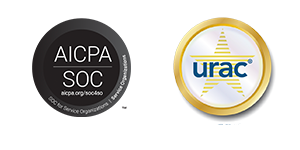Table of Contents
Established peer-to-peer programs, including Active Minds, Project Let’s, National Alliance on Mental Illness (NAMI) Peer-to-Peer, and Lean on Me, have created comprehensive training and advocacy programs. These programs are designed to arm students with the knowledge and skills necessary to support student mental health on college and university campuses. Let’s take a closer look at what is needed to create a successful peer-to-peer training program.
The components of peer-to-peer program training
There is not a one-size-fits-all approach to care for students with mental health conditions. Similarly, there is more than one approach for selecting a peer-to-peer program model and training curriculum.
However, many programs incorporate similar competencies. It’s important that peers are comfortable and confident in their roles and can effectively support students with emotional and mental health concerns.
To help students better support their peers, these components are recommended for peer-to-peer program training:
- Strategies and techniques for self-care
- Signs and symptoms of emotional distress, serious mental illness, and a student in crisis
- Empathetic listening and communication skills
- Creating an accepting environment that involves peer support services and mentors
- Suicide prevention skills that include validating emotions, offering hope, and referring for support (i.e. a helpline)
- Familiarization with services, resources, and departments available both on and off campus (i.e. health services or virtual health care options)
- Care protocols that include who to call or get involved if a student needs support beyond what the peer can provide
Other considerations may be necessary for a training curriculum if the peer program includes a crisis line, workshop facilitation, fundraising, political organizing, or other wellness elements. Groups that may be responsible for recruiting new members, designing communications, or planning and implementing events may also consider integrating training content that fosters group cohesion and specific skills that will enable the group to achieve its goals.
Training logistics for peer-to-peer programs
When designing or selecting a training curriculum for a peer-to-peer program, it is important to consider the logistics and timing to ensure that students participating in the program are supported in the process, and are exposed to a relevant and meaningful training experience.
Consider the following when making decisions to create an on-campus support network:
- Timing: When would be the best time for students and other training participants (i.e. employees) to attend? Should the training be spread out over time or all at once?
- Format: Would in-person and/or a virtual format fit the needs of your training?
- Space: If in-person, what space can accommodate the training?
- Student experience: What elements of the training need to be considered to ensure the students have an excellent experience?
- What materials can be provided to students that enhance learning?
- Consider the comfort of the student and what they have access to during the training (i.e. food, fuel, breaks to rest).
- Consider that some students may serve in another capacity on campus where they have received similar training.
Gathering feedback from students during and after the training to measure the effectiveness of the curriculum and experience will be helpful. Taking time to gather their feedback, review, and make changes for the next training cycle will be a beneficial task to allow for continuous improvement.
Young adults are more likely to seek help from friends
Implementing and sustaining a mental health peer-to-peer program
Whether implementing a new peer-to-peer program or sustaining an existing program, it is recommended that the following be thoroughly considered:
- Advisement
- Student participants
- Funding
- Program goals, outcomes, and assessments
Institutionalizing the program so that it has the support and resources necessary to be successful in the long term is extremely important. Planning what is needed for ongoing success will help establish the program as a prevention initiative.
Advisement
An advisor or advisors who are committed to providing support and guidance to the group is an essential leadership role that should be determined ahead of establishing the program. The role and responsibilities, along with time allocations, should be outlined so that there are clear expectations. In some instances, expectations for an advisor are dictated by the associated national organization (i.e. Active Minds Chapter Advisor) or the institution’s activities board. These responsibilities should also be explored and taken into account.
When selecting advisors, consider individuals who are involved in the subject matter, have leadership experience, are in roles that can advocate for the program, can link the program goals to other institution prevention initiatives, and are supported with the tools and resources necessary to be effective in the role.
Student participants
Student participation should be explored to determine if there are requirements students must meet to join and remain in the program or serve in a leadership role. The recruitment and selection process may be a formal system where an application is required.
Some programs welcome any interested student. Recruitment may depend on the activities the program will implement. It’s important to establish these activities ahead of time so that students know what to expect. A structured check-in and renewal process may be beneficial to gauge student progress and interest, which can strengthen the program outcomes.
Funding
Funding for the program should be determined by assessing the budget needs based on the program goals and expected outcomes. Budgetary needs will vary by program and school. Funding considerations include the following:
- Training costs may include purchasing training materials or food for students.
- Program activities may have minimal costs associated with them (i.e. paper and printing costs for handouts) or may be significant (i.e. table rental fees for a large-scale event).
- Fees may be associated with some programs to support the institution’s campus activity board or an affiliated national organization.
- Student-related costs should also be considered. Will students be paid for their participation? Will training require them to move into campus housing early? Will there be travel opportunities to conferences or other events off campus?
Many aspects must be considered when creating a budget along with how the program will be funded. When exploring funding options, consider opportunities to partner with departments, committees, or other entities to distribute costs. Additionally, grants may be available for start-up or ongoing funding needs, especially when the program is associated with institution-wide prevention initiatives.
Program goals, outcomes, and assessments
Establishing program goals and expected outcomes will provide a foundation to effectively plan program activities and evaluation methods. Goals should be clear and measurable and have a connection back to institution goals and/or the institution’s strategic plan. If there is an existing well-being committee or mental health initiative in place, consider how the program may integrate with the initiative’s goals.
Cohesion and clarity between departments and initiatives doing similar work are extremely important to establish and maintain shared responsibility for program success. Measurable goals will relate to specific outcomes that are expected: is the program looking to have an impact on service awareness, utilization, or other measures of mental health or well-being?
Identifying the expected outcomes early will help advisors and others involved understand what to measure and how to track and report on successes, needs, or growth opportunities. There may be existing tools to use to benchmark or establish a baseline to compare impact after implementing a program. Many campus-wide assessment tools are available (i.e. ACHA-NCHA, Healthy Minds Study, Wake Forest Well-Being Assessment) to consider using, or if already in place, reviewing the data available will be helpful to track trends.
As mentioned before, evaluating the student experience during their participation in the program will also help show progress and impact. Creating an annual report is a great way to communicate program successes and plans for future growth.
Key takeaways for building your program
Engaging students in peer-to-peer mental health support activities is a critical prevention strategy that institutions can take to promote mental health and well-being, as well as strengthen the capacity for support when a student is in emotional distress or has a mental health crisis. It is more likely for a student to reach out to a peer than to seek help from another source. So, enabling students to serve in this role will help create a network of effective peer support.
Learn more about supporting the whole student through virtual health and well-being delivered by high-quality health care providers and peer-to-peer support from TimelyCare.






